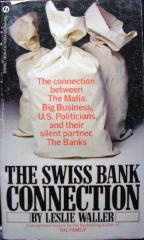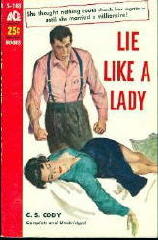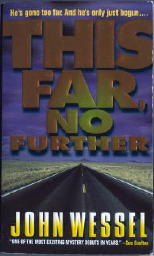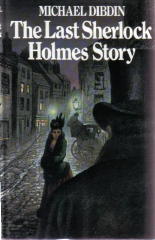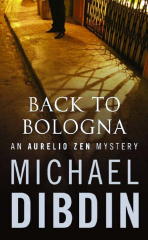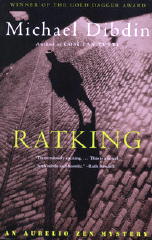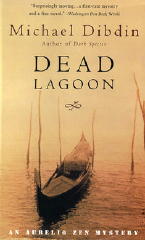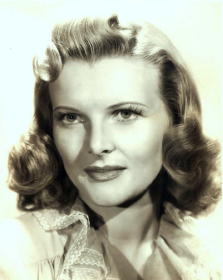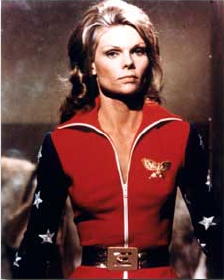April 2007
Monthly Archive
Fri 6 Apr 2007
— One of the activities that keeps my spare time occupied is adding images, links and miscellaneous information to the online Addenda to Allen J. Hubin’s Revised Crime Fiction IV. Here are some of the latest:
IRONSIDE, JOHN. Pseudonym of Euphemia Margaret Tait, 1866- , q.v. [Add definite year of birth.] Born in Liverpool; educated privately; journalist and novelist. Under this name, the author of eight novels included in the (Revised) Crime Fiction IV, one with marginal crime content, published between 1911 and 1945. Series character Inspector Freeman appears in two of them, but not the one illustrated below:
IRVING, CLIFFORD
The Spring. TV movie: NBC, 2000 (scw: J. B. White, David S. Jackson, Kathleen Rowell; dir: Jackson)
JAHN, MIKE
Switch. TV movie [series pilot]: Universal, 1975 (scw: Alan Godfrey, Glen A. Larson; dir: Allen Baron, Robert Day). SC: Pete Ryan (Robert Wagner) & Frank McBride (Eddie Albert).
JAQUES, EDWARD TYRRELL. 1859-1919. Pseudonym: Christian Tearle. q.v. Add year of birth.
JAY, EDITH KATHARINE SPENCER. ca. 1847-1901. Pseudonym: E. Livingston Prescott, q.v. Add approximate year of birth.
JOHNSTON, WILLIAM This author of many movie and TV tie-in’s is not William W. Johnstone, writer of many tough crime and western novels.
Banyon. TV movie [pilot for series]: Warner, 1971 (scw: Ed Adamson; dir: Robert Day). Leading character: 1930s PI Miles Banyon (Robert Forster).
JONES, JANE GILLIS. 1942-2002. Lifetime resident of Metro New Orleans; retired high school teacher. Author of one book previously listed in the (Revised) Crime Fiction IV; see below. The author was working on a second book in the series at the time of her death, Murder in Metairie Cemetery. Add middle name, years of birth and death.
Murder at Audubon Zoo (iUniverse, 2000, pb) [New Orleans, LA] Leading character: retired English teacher Elizabeth Young.
KATHRENS, (WILLIAM HAROLD) VAUGHAN. Intelligence Officer in WWII; assisted in arrest of Admiral Doenitz at the end of the war. The link will lead to his daughter’s account of some his activities; this link leads to more. Author of four hardcover crime thrillers published in the UK by Melrose between 1950 and 1953. Add first and second names, in parentheses.
KEELER, HARRY STEPHEN
The Case of the Two Strange Ladies. Add setting: Southern US. Leading character: Tommy Skirmont, reporter on the Southern City Democrat.
Fri 6 Apr 2007
MISTER SCARFACE, a.k.a. I Padroni della città. (Italy / West Germany). USA: PRO International Pictures, 1977; dubbed. Jack Palance, Harry Baer, Al Cliver, Edmund Purdom, Vittorio Caprioli. Director: Fernando Di Lio.
Sometimes you get exactly what you pay for. In my case I paid 99c plus shipping for both halves of a Jack Palance double feature on DVD, of which this is one. Half, that is. If you call it a dollar for this one, it’s worth about half of that, plus 85 minutes of viewing time.
Which I wouldn’t have spent it weren’t worth viewing, but I’m certainly glad I didn’t spend three bucks. The transfer to DVD was terrible. Color bursts and scenes shot in darkness coming out muddy and shadowy where shadows are not supposed to be can really spoil your mood for a movie. (The other half, The Four Deuces (1975, with Carol Lynley), may make the deal come out a steal, and as always, I will let you know.)
The movie was filmed in the slums of Rome, or so I’m told, as I didn’t recognize anything anywhere at any time, but truthfully I’ve seen worse slums. The Italian ambiance must make all the difference in the world. “Scarface” Manzari (Jack Palance) is the head of one gang of crooks and thieves, and young, overly brash Tony (Harry Baer) is a bag man for another. Determined to rise in his own gang of crooks and thieves, headed by Luigi Cherico (transplanted British actor Edmund Purdom), Tony takes Scarface for ten million lira, of which he hands only three million back to Luigi.
Does Scarface take this lying down? No, of course not, you know what I mean? Jack Palance glowers a lot and handles his long cigarette holder with consummate ease, but he looks far, far away from what a few IMDB viewers variously call a powerful and exciting Italian gangster film, with an “imposing” performance by Palance. None of the above is precisely true, but beyond that, we are only arguing matters of taste.
Comic relief is provided by Vittorio Caprioli, as an aging gangster who, after being dumped by Tony’s gang, casts his lot with the brash young lad. Both of their performances are worth watching. The long shootout at the end would have been boring and utterly without redemption without the former’s humorous ineptitude, for example.
Even so, the long shootout at the end manages to come awfully close to that inscrutable, indefinable boundary between good and just plain awful. Or depending on your mood at the time, perhaps the line is crossed not only once, but several times, in this last burst of highly choreographed diorama (or low drama) of cars, motorcycles, guns, guns and more guns.
Thu 5 Apr 2007
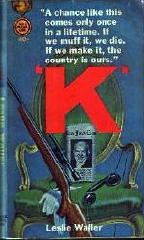 There are events in the real world that you, I am sure, would find hard to believe if someone would take them simply as they happened and write them up as part of a work of fiction. Noted comic book writer Arnold Drake died in mid-March at the age of 83. Spy fiction author Leslie Waller died on March 29th, four days before his 84th birthday.
There are events in the real world that you, I am sure, would find hard to believe if someone would take them simply as they happened and write them up as part of a work of fiction. Noted comic book writer Arnold Drake died in mid-March at the age of 83. Spy fiction author Leslie Waller died on March 29th, four days before his 84th birthday.
The connection? In 1950 as “Drake Waller” the two men collaborated as the author of It Rhymes with Lust, considered to be the first graphic novel, a digest-sized work in comic book form. Of marginal interest as a crime novel, it nonetheless was recently added as a marginal entry to Crime Fiction IV, by Allen J. Hubin. See the online Addenda, Part 12.
Two men, born within a year of each other, worked on one key book together in their 20s, went their own professional ways, and then died within weeks of each other. Destiny sometimes moves in mysterious ways.
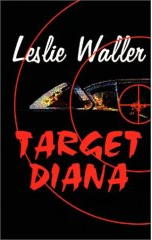
Not all of Mr. Waller’s bibliography consists of crime-related fiction, but a large portion of it is, with espionage, crooked bankers and Mafia elements predominant.
He was in fact a Gold Medal writer, as a book simply titled “K” (Gold Medal, 1963) was a plot to assassinate Khrushchev during a visit to the US.
His final work of fiction was Target Diana, a trade paperback with low distribution in which Princess Diana was murdered by a rogue agent, with the secret approval of the Royal Family.
Excluding It Rhymes with Lust, but expanded to included Target Diana, Leslie Waller’s output as recorded in CFIV looks like this:
WALLER, LESLIE (1923-2007); see pseudonyms C. S. Cody & Patrick Mann.
* “K” (n.) Gold Medal, pbo, 1963 [Chicago, IL]
* A Change in the Wind (n.) Geis 1969
* The American (n.) Putnam 1970 [Europe]
* The Coast of Fear (n.) Doubleday 1974 [Italy; WWII]
* The Swiss Account (n.) Doubleday 1976 [Switzerland]
* Trocadero (n.) Delacorte 1978 [Paris]
* Gameplan (n.) Bantam 1984
* Embassy (n.) McGraw 1987 [London]
* Amazing Faith (n.) McGraw 1988 [Europe]
* Deadly Sins (n.) Heinemann. UK, 1992
* Mafia Wars (n.) Onyx 1993
* Tango Havana (n.) Heinemann, UK, 1993 [Havana, Cuba]
* Manhattan Transfer (n.) Heinemann. UK, 1994 [New York City, NY]
* Eden (n.) Severn, UK, 1997
* Target Diana (n.) Transatlantic Publishers, pb, 2001.
CODY, C(harles) S.; pseudonym of Leslie Waller.
* The Witching Night (n.) World 1952 [Indiana]
* Lie Like a Lady (n.) Ace, pbo, 1955 [Chicago, IL]
MANN, PATRICK; pseudonym of Leslie Waller.
* Dog Day Afternoon (n.) Delacorte 1973 [New York City, NY]
* -The Vacancy (n.) Putnam 1973
* Steal Big (n.) St. Martin’s 1981 [England]
I haven’t happened to have found a cover image for Tango Havana (1993), but I did come across a description of the plot. Hoping to provide an idea of the kind of stories Mr. Waller wrote, I’ll include it here:
“Cuba in the days when Meyer Lansky called the shots and General Batista ruled. An island where no man was what he seemed. A Mafia boss, a missile crisis, and a mess that went all the way to the White House. But while history turns on its axis, a conspiracy threatens to blow the Caribbean apart. It takes two to tango. Victor Sanchez and Midge Boardman just have to decide who leads.”
And taken from the same book, here’s a short “About the Author” biography:
“Born in Chicago, IL, Waller attended the University of Chicago and earned his M.A. from Columbia University. A crime reporter, he joined the United States Army Air Force intelligence in World War II. He published his first novel [
Three Day Pass] in 1944, followed by some 50 more over the years.
“From his first marriage he has two daughters and four granddaughters. He married Patricia Mahen in 1967, moving to Italy and eventually England. After 15 years abroad they now live in Naples, Florida where he writes, lectures and contributes to Florida’s leading cultural magazine, the Naples Review.”
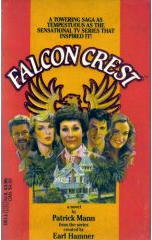
Although some sources say Mr. Waller wrote several screenplays, IMDB mentions only his work as a writer for the TV show Falcon Crest, and that a non-fiction book he wrote, Hide in Plain Sight was made into a 1980 film starring James Caan. Not stated on IMDB, as Patrick Mann he also wrote the book which novelized the film Dog Day Afternoon. Either of these may be where the confusion arises.
Even though it’s not included in CFIV, some of the behavior displayed on Falcon Crest was definitely criminous in behavior. Below you’ll find a image of the cover of the book, a novelization of the TV series written by Patrick Mann, a.k.a. Leslie Waller, once again the man behind the pen name.
[UPDATE] 12-02-08. Based on a suggestion included in an email I received from Dan Bara today, Al Hubin agrees that the following two titles by Leslie Waller are crime-related and should appear in CFIV. The brief descriptions of each were found by me and helped Al make the call:
At 01:44 AM 12/2/2008, you wrote:
Mr Lewis,
I believe books that have crime/mystery tones that are not listed in your blog post are: The Banker (1963) and The Family (1968).
Hope that helps!
Good Day, Dan
Descriptions from various sources:
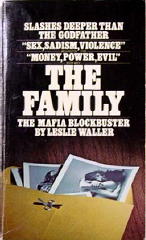
The Family.
FROM THE FRONT COVER: Slashes deeper than the Godfather, “sex, sadism, violence, money, power, evil.”
“An explosive story that bares the link between the big-time bankers and big-time crime.”
The Banker.
The money man: He owned villas in France, Italy, Switzerland, England, Germany & the Caribbean–each outfitted with emperor-sized round beds …. He was a juggler of power & people, keeping an uneasy balance between the broads he bought, the men he bled, the Swiss bankers & mafia musclemen he did business with. He was one step ahead of the SEC, the IRS, & the Justice Department. He was the wheeler-dealer king of international finance.
Woods Palmer moves into the field of intrigue and counter-intrigue in the big business world of banking in America.
Thu 5 Apr 2007
JOHN WESSEL – This Far, No Further
Island/Dell; paperback reprint, November 1997. Hardcover, first edition: Simon & Schuster, October 1996.
Here’s an even better example of what I was rambling on about just before this when I was reviewing Dreamboat, the Jack Flippo PI novel by Doug J. Swanson, although I don’t think this first book by John Wessel, also a private eye novel, caught anyone’s eye for an Edgar nomination.
Wessel’s detective is named Harding, an unlicensed PI working in the Chicago area. Both he and the author seem to have had a three-novel run, and that was all that it appears there will ever be:
This Far, No Further. Simon & Schuster, 1996; Island/Dell, 1997
Pretty Ballerina. Simon & Schuster, June 1998. No US paperback edition.
Kiss It Goodbye. Simon & Schuster, January 2001. No US paperback edition.
The fact that only the first one came out in paperback certainly says something, but of course it is never easy to interpret these things correctly. One obvious explanation is that for the last ten years (or more?) private eye novels no longer rule the roost as they did, once upon a time. Either Wessel’s writing never caught on, starting with his very first book, or perhaps even more likely, Island/Dell didn’t give him (or the books) the chance they needed.
And there are not too many series with continuing characters which beat the odds and succeed in hardcover only. Without the paperback reprint coming out a year later, just about the time the next one in hardcover shows up, a series almost always seems to lose steam, then is forced to pack up and leave, never to be seen again.
Should the Harding books have succeeded? Were they wrongly done in? I have mixed feelings about this. There is a lot to like in This Far, No Further, and there is a lot, well, let’s say that I had problems with, and maybe other readers did too.
First to like: Harding tells his own story, first person (uh-oh) present tense. Present tense? I can live with that, even though it fought me a little. The telling is spirited and enthusiastic, even though Harding has been badly wronged in his life, so far, and the less-travelled (grittier) paths and neighborhoods in Chicago are described with the panache and style of a long-time inhabitant.
Second to like: Harding’s lady friend Allison, a commercial photographer and (evidently) one-time girl friend who assists him on this case. The banter between them is relaxed, pointed, trenchant and (all at the same time) far more cutting than Spenser ever has had with Susan, as enjoyable as the Robert B. Parker books are and always have been. Nor has much of the past between Alison and Harding been made clear by the end of the book. Allison, who is also very good at the martial arts, seems as well to have close lady friends of her own.
Not to like very much: The utter sleaziness of the dead girl’s death in a rundown motel outside of Chicago, the victim of what appears to have been a sex tryst that went way too far. Harding was following the male in the party, a noted plastic surgeon whose wife hired the lawyer who hired Harding. Much is made later of videotapes and other paraphernalia.
Not to like even more: The plot itself eventually becomes verbal sludge and next to impossible to follow. You may take this as an overstatement born out of frustration, and you would be right, but nonetheless, it is true. Harding’s own past – the reason behind the loss of his license – eventually becomes entangled with the doc and his problems, and Harding’s attraction to his wife (and his client, twice removed), and I confess that by that time, I was only skimming the pages.
As fast as I could. Was I about to about to quit? No.
Absolutely not. Did I go online and buy the next two books in the series? Yes.
Can there be more to be said than that? Probably, but I hope I don’t need to.
Thu 5 Apr 2007
DOUG J. SWANSON – Dreamboat. Jack Flippo #2. HarperCollins, hardcover, February 1995. Harper, paperback, January 1996.
The mystery shelves of used bookstores are filled with any number of series of detective fiction that appeared out of nowhere, flamed brightly for a short while, then just as suddenly disappeared. If there were still used bookstores, that is. They are, alas, an endangered species, are they not?
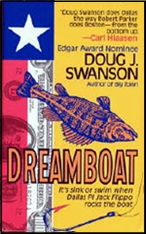
I’m not going to digress off in that direction, though. Not this time. I’m going to stay focused and on track, even if I have to force myself. Private eye novels, which this one is, or cozies, which this one isn’t, it makes no difference. If they don’t catch on, in spite of critical acclaim, they gone, they’re history, and how many of the Jack Flippo PI novels can you name? Do you know what major city he worked out of? Had you heard of Jack Flippo before you began reading this review?
One of the reasons I began this review the way that I did is that on the front cover Doug J. Swanson is described as an “Edgar Award Nominee.” Given all of the questions I just asked you, this is a fact I did not know myself — but it’s why my mind went poetic on me, re the fire “that flamed briefly brightly” and all, and I hope you’ll forgive me.
Here’s the list of all of Swanson’s mystery fiction. The detective in each of them is Jack Flippo.
Big Town. Harpercollins, hc, February 1994.
Harper, pb, February 1995
Dreamboat. Harpercollins, hc, February 1995
Harper, pb, January 1996.
96 Tears. Harpercollins, November 1996.
No paperback edition.
Umbrella Man. Putnam, hc, July 1999.
Berkley, pb, May 2000.
House of Corrections. Putnam, hc, August 2000.
Berkley, pb, May 2001.
That’s it. That’s all there were. Viewing it from the outside, and given the three year gap around then, it looks very much as though Flippo’s career was all but over after the first three. The Edgar nomination came in 1995 for Big Town in the category of Best First Novel of the Year. (It did not win. The award went to The Caveman’s Valentine by George Dawes Green, as I am sure you will recall.)
Swanson himself was a long-time reporter for the Dallas Morning News, or so I’ve discovered, and at the age of only 53, there’s a good chance he still is. Luckily he’s had a day job to fall back upon. But what this also means is that he knows the Dallas area, and the people that live there, all kinds of them: the small-town hicks, the semi-slimy big-city entrepreneurs, the ladies of the evening, high and low, good folk and bad. He also has a sense of humor about his approach to mystery fiction (and probably life as well) that tickles my funny bone, and who knows, maybe yours as well.
Jack Flippo used to be an Assistant D.A. in Dallas. At the beginning of this book, he’s a non-practicing lawyer, a newly licensed investigator, and he’s in jail for simple assault. The victim: his ex-wife’s boyfriend. (This turns out to be important.)
The case he’s asked to work on, by the insurance exec who bails him out, is to look into the death by drowning of a gent with a half-million dollar policy on him Off he goes, therefore, to a small town called Baggett, somewhere in East Texas, where he meets a small town justice of the peace and an even smaller (five foot six) hick sheriff by the name of Loyce Slapp. You can bet that Flippo doesn’t get anywhere, and fast, even if he suspects foul play, and you would win.
He also meets a girl named Sally, good-looking, of course, and who works for the dead man’s partner in an exotic-type night club in Dallas. This is important, too, since a friend of hers named Bobby has gone missing, and she’s starting to get worried. Apparently he is (or was) in on whatever business went on in Baggett, and is in hiding (or worse). Thieves do fall out, and in Texas everything does grow taller, including tales like this one.
While Jack is quick with the quip and talks with a basket full of confidence, I have to say (reluctantly) that it would be nice if he had a small modicum of competence to go with the confidence. Things do not always go smoothly for Mr. Flippo, in other words. Spenser he is not, not to mention that he does not have a Hawk for a back-up. Nor even back-up plans for every contingency, for that matter either. On the other hand, not all of his various problems and ill-times mini-disasters are entirely his fault, exactly.
So a somewhat warped sense of humor (like mine) is what you need as a reader, and if that is what you have, you will have a rattling good time. On the other hand, and you may be certain that there is one, the story also goes off into some dark and dangerous directions now and then as well. It isn’t all funny-named characters who are in over their head in matters criminous. Some of the bad guys are rather competent, as a matter of fact. The ending — if I may now at this juncture skip over some of the story lines which you are better off reading yourself anyway — is better than average, even in comparison with PI novels which take themselves a lot more seriously.
I would imagine that the five Jack Flippo novels are all there are going to be. If you were ever to spot one in a used bookshop shelf someday, may I suggest that you don’t pass it by. If the description of this one hasn’t sent you running in the other direction already, which of course I realize that it very well may, do yourself a favor and give it a new home. You’ll thank me, I?m sure, and maybe as early as the very same evening.
— September 2006
Wed 4 Apr 2007
After the news of Donald Hamilton’s death late last year was confirmed two days ago, the world of mystery fiction has been rocked a second time this week. Michael Dibdin, creator of the deeply idiosyncratic Venetian police detective Aurelio Zen, passed away last Friday, March 30th, only eight days after his 60th birthday.
Rather than duplicate the effort, I strongly recommend you visit The Rap Sheet, where J. Kingston Pierce has done his usual excellent job of putting together a series of links and quotes about Mr. Dibdin, who certainly left us far too young.
While his first book was a well-regarded Sherlock Holmes pastiche, one in which the master detective confronted Jack the Ripper, Aurelio Zen is the character Mr. Dibdin’s career has been centered around ever since. And from what critics around the world have said, his reputation, were it to depend on only this one creation, is secure for a long time to come. I’ll quote only one section of the obituary in the Telegraph, as posted by Jeff at The Rap Sheet:
“Aurelio Zen’s initials offered a clue to his creator’s methods and motives; in the course of the series, Dibdin pieced together an A to Z of contemporary Italy, a composite of finely-drawn observations about the country and its people. The picture he painted, however, was no rose-tinted idyll: his tenth Zen mystery,
Back to Bologna (2005), opened with a football club tycoon slumped dead over the wheel of his Audi, a bullet in his brain and a Parmesan cheese knife rammed through his chest.”
Michael Dibdin was born in England but lived in the Seattle area in the US since his marriage in 1995 to fellow mystery writer K. K. Beck. The following bibliography of his crime fiction, as expanded from Crime Fiction IV, by Allen J. Hubin, lists only the British editions:
# The Last Sherlock Holmes Story (n.) Cape 1978 [Sherlock Holmes; London; 1888]
# A Rich Full Death (n.) Cape 1986 [Florence; 1855]
# Ratking (n.) Faber 1988 [Insp. Aurelio Zen; Italy]
# The Tryst (n.) Faber 1989 [England]
# Vendetta (n.) Faber 1990 [Insp. Aurelio Zen; Italy]
# Dirty Tricks (n.) Faber 1991 [Oxford; Academia]
# Cabal (n.) Faber 1992 [Insp. Aurelio Zen; Rome]
# The Dying of the Light (n.) Faber 1993 [England]
# Dead Lagoon (n.) Faber 1994 [Insp. Aurelio Zen; Venice]
# Dark Spectre (n.) Faber 1995 [U.S. Northwest]
# Cosi Fan Tutti (n.) Faber 1996 [Insp. Aurelio Zen; Naples]
# A Long Finish (n.) Faber 1998 [Insp. Aurelio Zen; Italy]
# Blood Rain (n.) Faber 1999 [Insp. Aurelio Zen; Sicily]
# Thanksgiving (n.) Faber 2000 [Nevada]
# Medusa (n.) Faber 2003 [Insp. Aurelio Zen; Italian Alps]
# Back to Bologna (n.) Faber 2005 [Insp. Aurelio Zen; Bologna]
Again according to the Telegraph: “Back to Bologna was Dibdin’s most recent title, but he has an 11th (and probably last) Zen novel, End Games, due out in the UK in July and in the States in November.”
Wed 4 Apr 2007
Posted by Steve under
Authors[4] Comments
A day or so after Bill Pronzini’s
short article on Elliott Chaze appeared on this blog, Ed Gorman posted the following over on
his site. It is reprinted here with his permission:
Chaze is known in pulp circles for his flawless novel Black Wings Has My Angel, which many people feel is the single best novel Gold Medal published during its heyday. As Bill details, Chaze also wrote several other novels, a few of which are also fine books.
As I was reading the Chaze piece last night, I started remembering the two or thre phone calls I had with him. At that time the original Black Lizard Publishing Company seemed to be flourishing. Both Barry Gifford, the line’s editor, and I wanted to get Angel back into print. I agreed that I’d try and track Chaze down. Took a while but I finally got a phone number.
He seemed almost amused that anybody remembered Angel with such respect and interest. He talked first about a few of his other books. My interpretation – and I may be wrong here – is that he felt hardbacks published by major houses should be of more interest than a paperback original.
But as we talked, I kept bringing up scenes from Angel. And finally he began speaking enthusiastically about it. That is, until I told him what we could pay him for it. He then went into a low key but bitter story about how “New York” screwed writers at every turn. They didn’t pay much, they didn’t promote, they cheated you on royalties. While these were all standard writer complaints, he delivered them with singular ferocity.
He assured me several times that he liked me, that he just might have to look up one of my books, that he’d appreciate seeing some Black Lizard novels to look over. He obviously didn’t want to end on a bitter note. He even invited me to call him again, which I did. The next call we mostly talked books and movies we liked. And toward the end about his career as a journalist in the South during the most turbulent decades since the Civil War.
He was a bright, gifted man. We never did reprint Angel because the line was sold suddenly. But I sure wish we had. I can see it with one of those great Kerwan covers on that shiny stock the Lizards used. Chaze would have been right at home with the other hardboiled greats, Fredric Brown, Peter Rabe, Jim Thompson, Charles Willeford and many others – Barry had developed, for my taste, the best reprint line of American hardboiled fiction ever offered anywhere.
>> Bill Pronzini’s reply: I envy Ed’s contact with Chaze, who was clearly a writer after my own heart. I’d have enjoyed knowing him, I’m sure. His experiences with and feelings toward publishers and publishing pretty much mirror mine.
Wed 4 Apr 2007
Before breaking up part of it a few years ago, Walker Martin had one of the largest collections of pulp magazines in the world. It’s still large, and he’s in the process of building some of it back up again. Two of his favorite pulp magazines have always been
Black Mask and
Dime Detective. After he commented on my recent
review of the Charlie Chan movie,
The Scarlet Clue, I asked him if he’d seen the blog entries on Morton Wolson, aka Peter Paige:
Hi Steve –
Yes I read the Morton Wolson post but somehow missed the letter from his son. I think I mentioned to you a couple years ago how I had tracked Morton Wolson down and visited him in his furniture store in Manhattan.
It was in the 1980’s and my wife was with me. We spent a couple hours talking about his pulp career, Ken White, who was the editor of Dime Detective, and Joe Shaw. I got the impression he was the owner of the store, which was quite large but empty of any customers while I was there.
Wolson was amazed that anyone was interested in talking about the pulp days. He said he was paid quite well for the Peter Paige novelettes, most of which starred Cash Wale and his sidekick Sailor Duffy. He received around $500 per novelette which in the 1940’s was a big sum of money. His agent was Joe Shaw (which he referred to as Cap Shaw) and when the pulps died off in the early 50’s, an attempt was made to break into the paperback market but nothing came of it.
He remembered all the Dime Detective and Black Mask authors and had nothing but good things to say about his pulp days. When nothing came of his attempts to write mainstream literature, he somehow got into the furniture business and was successful.
I asked him about the other pulps that Popular Publications published but he said he had no interest in them because except for Black Mask, Dime Detective, Detective Tales, New Detective, Adventure, the other pulp titles were slanted for the teenage boy market. Adults did not really read the hero pulps like Spider, G-8, Operator 5, etc.
This is an interesting comment that I have heard from other old timers that actually bought the pulps off the newsstand. Harry Noble, who I was friends with for almost 40 years, used to laugh to see the adult collectors of today making such a fuss over The Shadow, Doc Savage, etc. When these hero pulps were on the newstands, the main audience was kids, teenagers, mainly boys. The girls were interested in the love pulps.
My wife’s father who died recently at age 93, often told me that he and the other blue collar working men bought the adult pulps like Blue Book, Adventure, Black Mask, Western Story, etc. It never crossed his mind to save the issues. They were read to pass the time and then thrown away.
Anyway these were the things that Morton Wolson talked about. We kept in touch for a while, and then I guess he retired and eventually I mislaid his new address. One funny thing, a year or so later I came across some cancelled checks from the files of Popular Publications. I still have some showing payment of several hundred dollars to Morton Wolson for the Peter Paige novelettes. I sent Morton some copies of these checks and he was astonished to see such things still in existence.
I’m sorry to learn he is no longer with us. I always enjoyed the Cash Wale stories.
Tue 3 Apr 2007
SUED FOR LIBEL. RKO Radio Pictures, 1939. Kent Taylor, Linda Hayes, Lilian Bond, Morgan Conway, Richard Lane. Based on a story by Wolfe Kaufman. Director: Leslie Goodwins.
I don’t know about you, but while watching the cast credits go by at the beginning of this movie, Kent Taylor was the only one I recognized right away. Morgan Conway I knew played Dick Tracy in a couple of films later on, but the others, including the two ladies, were only names to me, and more about them later.
But whenever the star appeal is as low as this, as it was to me, I start thinking “low budget.” And on occasion, starting with low expectations is not all that bad, as this rather generic detective film met or surpassed those low expectations, and then some. Not by a mile, I grant you, but at least by a hair. It’s built around a radio program put on by a newspaper to dramatize the day’s events live. Being an Old Time Radio fan myself, that was a plus right there.
Thanks to a practical joke one reporter (Linda Hayes) plays on another (Richard Lane), the program directed by a third (Kent Taylor) gets the jury’s verdict in a murder case backwards, “guilty” instead of “innocent.”
Hence the title of the movie. To win the resulting lawsuit, it is up to the threesome above to solve the murder themselves, and with degrees of trepidation and humor, they do. Morgan Conway is the accused murderer, and Lilian Bond is the wife of the murdered man who’s also a close friend of the defendant. Maybe you could write your own scenario from this.
Wolfe Kaufman, who did write the story, which holds water only as long as you don’t watch too closely, has one title listed in Al Hubin’s Crime Fiction IV: an Inner Sanctum Mystery entitled I Hate Blondes, published by Simon & Schuster in 1946. Kent Taylor, an actor in the Clark Gable vein, but nowhere near as successful, later played Boston Blackie on TV, and Clark Gable didn’t.
Lilian Bond plays her role in the courtroom strictly on the straight and narrow, but later on when the hairpins start flying, she becomes quite a looker, even though her career never went anywhere. I think it should have. That’s her photo up above, but (truth in advertising) she never looked like that in this film, no matter what I just said.
As for Linda Hayes, the snappy gal reporter lady, her career lasted only for 17 movies, all filmed between 1939 and 1942. She may be more famous as the mother of Cathy Lee Crosby, who later briefly played the super-powered crimefighter Wonder Woman on television. Perhaps you can see the resemblance.
Mon 2 Apr 2007
In the course of our conversations via email about Donald Hamilton’s death today, Charles Ardai, publisher of the Hard Case line of hardboiled paperbacks, confirmed that “a final, unpublished Matt Helm book exists but that Don’s son isn’t ready to publish it yet.”
There was more that was said about the book, but at the moment this is all I’m at liberty to pass along. Personally, this is good news, but it certainly would be better, if not great news if there were any indications that it would be published soon. Which, on the other hand, you should not take as implying that it won’t be.
« Previous Page — Next Page »
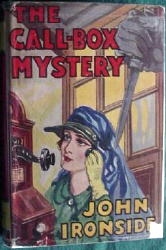
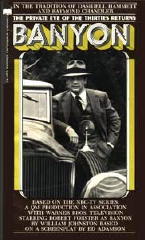
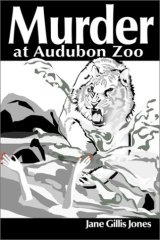
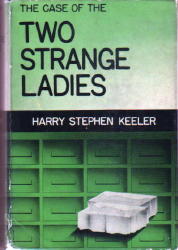
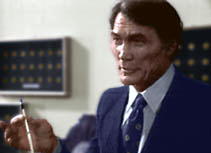
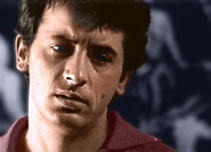
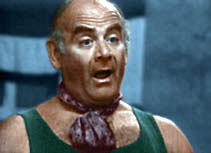
 There are events in the real world that you, I am sure, would find hard to believe if someone would take them simply as they happened and write them up as part of a work of fiction. Noted comic book writer
There are events in the real world that you, I am sure, would find hard to believe if someone would take them simply as they happened and write them up as part of a work of fiction. Noted comic book writer 
